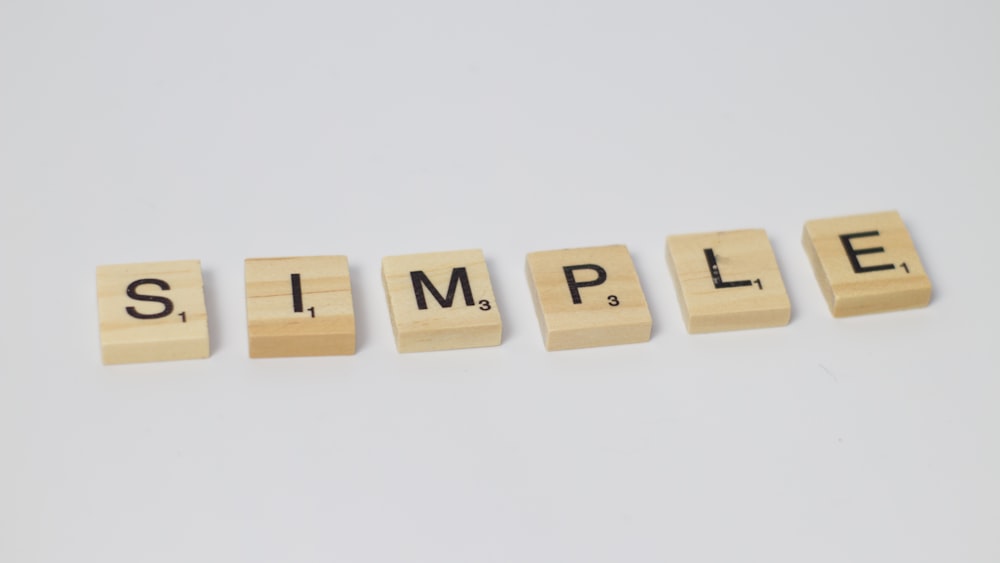Ever wonder what it’s like to start ant keeping as a hobby, watching a colony of ants grow from 1 ant to over 20,000?
If you are interested in getting started with ant keeping and want to create your ant colony – you need the basics.
Below is more information (lots of it) about getting started with ant keeping, the different beginner ant types, a full guide, and how to find your first ants to create your first ant colony.
Complete In-Depth Ant Keeping Guide
Millions of people have recently started this “new” hobby called Ant Keeping.
Some even use it for scientific research, to learn more about their favorite insects – a research branch called myrmecology. (Source)
Today we’ll learn all about the basics!
We will discuss everything a beginner needs to know or learn.
Everything from how to take care of and feed your growing Ant colony.
This article should help you with your fears and reservations about starting your own colony.
Ant keeping is one of our favorite hobbies – and we hope that you find the same love for ants that we have.
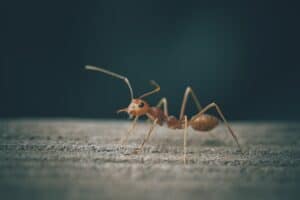
Ants are intelligent and social creatures who create and live in their own nest.
There are more than 12,000 species of ants in the world!
They aren’t regionally dominated either; you can find different species of ants in (almost) every part of the world.
Let’s clear the most common doubts every beginner has.
We’ll go through a step-by-step procedure, making it easier for you to understand.
Where Can I Find Ants for my Ant Farm?
This is one of the most common questions every beginner ant keeper wants to know.
We know you can find ants in every part of the world, but where is best?
The answer to that question is whichever species of ant you find outside or around your house.
Beginner Friendly Ants
The ants around your house have adapted to your area’s environment, food types, climate conditions, and water quality.
This gives you an advantage, as they will already be used to your environment.
You can buy Ants (Be careful about ant-keeping laws!). There are a lot of online sites on the internet where we can buy ants. (Source)

Remember, ants come from all different parts of the world, so you can find a type that you find exciting and can live in your climate right around your home.
Ants are very adaptable creatures.
If you want the best and cheapest option, find a couple of ants around your house.
To learn more about the specific types of ants that are best for beginners and more experienced ant keepers, read the related guidelines:
- What are the easiest ants to keep?
- What are wood ants and should we put them in an ant farm?
- What are the reasons a beginner ant keeper should not raise fire ants?
- What are the best ants to keep for beginners?
- What are some of the hardest ants to raise for beginners?
- How To Get a Queen Ant Out of Her Nest
Different Ant Roles With An Ant Colony
Ants have a system that divides their roles and responsibility throughout the colony.
Reproductive males, reproductive females, and non-reproductive females are the key roles.
This converts to males, Queens, and workers.
The males mate with the Queen and die shortly after.
The role of the Queen is to lay eggs and expand the colony.
The worker ants support the Queen, hunt for food, and build the colony.
These ants last longer than the males, but not nearly as long as the Queen.
So, we can’t form a long-term colony without a Queen Ant to reproduce ants.
What Are Some Ways to Find a Queen Ant?
Without a Queen Ant, we can not sustain the colony.
Worker ants will not survive nearly as long as the Queen Ant as they do a ton of work.
To plan for a long-lasting ant colony, you must have a Queen Ant.
There are two ways you can get a Queen Ant; You can order it from online sites or find it yourself.
The easiest way is to catch a Queen Ant by yourself, but how do you do it?
During the mating season, young female ants and male ants take their nuptial flights, a flight into the air to link for mating.
After mating, Queen Ants break off their wings and search for a place to start their colonies.
This is the perfect time to find and capture a Queen Ant.
Make sure you are keeping your eyes on the ground!
Some familiar places to find a Queen Ant are collapsed woods and behind large rocks.
Queen Ants will be bigger than other neighboring ants, and the Queen’s thorax is usually more extensive than the rest of its body.
When you find Queen Ant, quickly put her in the tube or a jar.
How to Set Up a Test Tube for Ant Keeping
Now that you’ve found Queen Ant, you must put her in a new test tube.
It is time to set up where she’ll build her colony.
Your job now is not to disturb her as much as possible by placing the test tube under a towel to allow it complete darkness.
I recommend you to check up on her every 4 to 5 days.
The test tube has two sides, one filled with fresh water and the other with the Queen Ant (with a cotton ball in-between)

Remember that you have to put two cotton balls at both ends of the test tube, with one having some water behind it.
Only one Queen ant can be put in one test tube setup.
She will lay her egg there and form her new colony.
This can take a few months or even up to a year.
Do not try to speed up the process with two or three Queen Ants; they will kill each other or delay mating as there is another Queen in the test tube.
[amazon box=”B07QHT3TS8″]
When to Take The Ant Farm Out of The Test Tube?
The bigger your Ant colony is, the better.
When your test tube has more than 50 ants, it is time to move them to a formicarium or a tank.
One of the mistakes new ant keepers make is moving their ants too early.
This can be harmful to the ant colony because there won’t be enough workers to function in a colony properly.
Remember that ants split up the work evenly for the whole environment. If you increase the cage size, you have also increased the amount of work they will need to do.
There will be a lot of new space – even ants can get lost and overworked.
If you plan to move them to a big enclosure, make sure you allow them to grow upwards of 100 ants.
This will keep the ants from getting overwhelmed with the size of the new cage.
The Best Substrate for Ant Farms and Formicaria
There are a few options for choosing the substrate for formicaria.
When selecting a substrate, consider what is best for the ant species and the ant farm enclosure to house the colony.
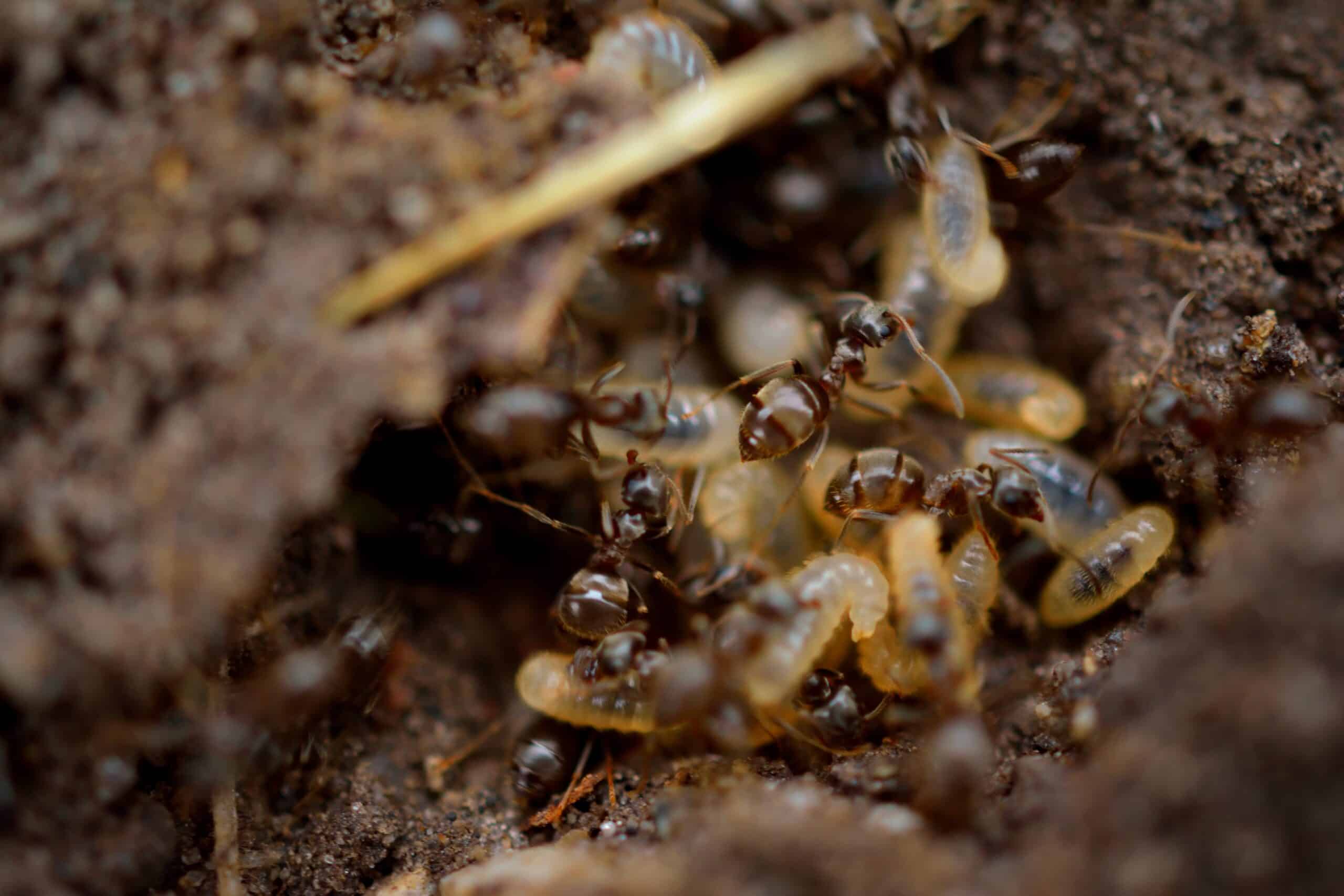
One of the easiest ways of doing this is to remember where you got the ants from.
Was there sand around? Soil? Answering this is a leg-up on this decision, as you should copy their previous environment.
- Sand is the easiest to deal with while making the ant army noticeable and visible. If you create the tunnels yourself, moisten the sand first, and it will help the tunnels last longer. (learn more)
- Soil would be the most natural ant farm substrate choice, and ants usually are found running around in the soil. Adding extra greenery will benefit your new ant formicarium, taking advantage of the nutrients from the mineral-rich soil used in your ant farm. (learn more)
- Gel is another common type of substrate that has been designed explicitly for ant farms, and it does, however, create some unusual reactions when used in a formicarium. Ant farm gel is an artificial substrate intended exclusively for ant nest development, and this substrate is also nutrient-dense and edible. We highly recommend you never use gel.
10 Tips For A Healthy Formicarium (Ant Farm)
1. Make sure your ant farm is chilled before putting your ants into it
Lowering your ant’s body temperature before the transition is a rather brilliant approach for moving ants in a nice controlled manner.
Putting them in the refrigerator for approximately 15 minutes can settle them down and move much slower until they warm up again.
This expert-level tip could save you a ton of trouble once you start to move your ants.
Instead of them frantically running around, you’ll be able to operate while they are very slow to move.
2. Before Introducing A New Colony, Prepare The Nest.
Making tunnels is an essential yet effective operation that will assist in jump-starting a new group of ants.
Ants may find their new surroundings puzzling and distressing.
Pre-probed holes around two inches deep are required for ants to locate an instant location of the shelter.
Please make sure these holes are close to where you drop in your test tube, making it easier to find for the risk-taking ants that first venture out.
3. Feed ants in proportion to their size.
It’s easy to think that ants in the wild would consume almost anything.
However, if we want a robust colony, we must provide our ants with a well-balanced diet.
To live, ants require protein and simple carbs.
Carbohydrates are found in fruits and sugar.
Insects, both dead and living, are high in protein.
Don’t overfeed your ants since uneaten food can attract mildew, mold, and unwanted germs into the cage.
4. Make sure your ants are well-hydrated.
Along with good food, making sure your ants are well-hydrated is critical.
A tiny tray full of water at all times would be ideal, but if the enclosure is too small for a tray, a dropper might need to be used to keep the top layer of substrate moist.
[amazon box=”B08QM81BJV”]
5. Get Rid of Any Decomposition Signs.
Ants are extremely clean and tidy creatures.
They do a fantastic job of keeping the ant nest and formicarium tidy.
They do, however, transport all of their dead and uneaten food to a specific region in both the test tube and formicarium.
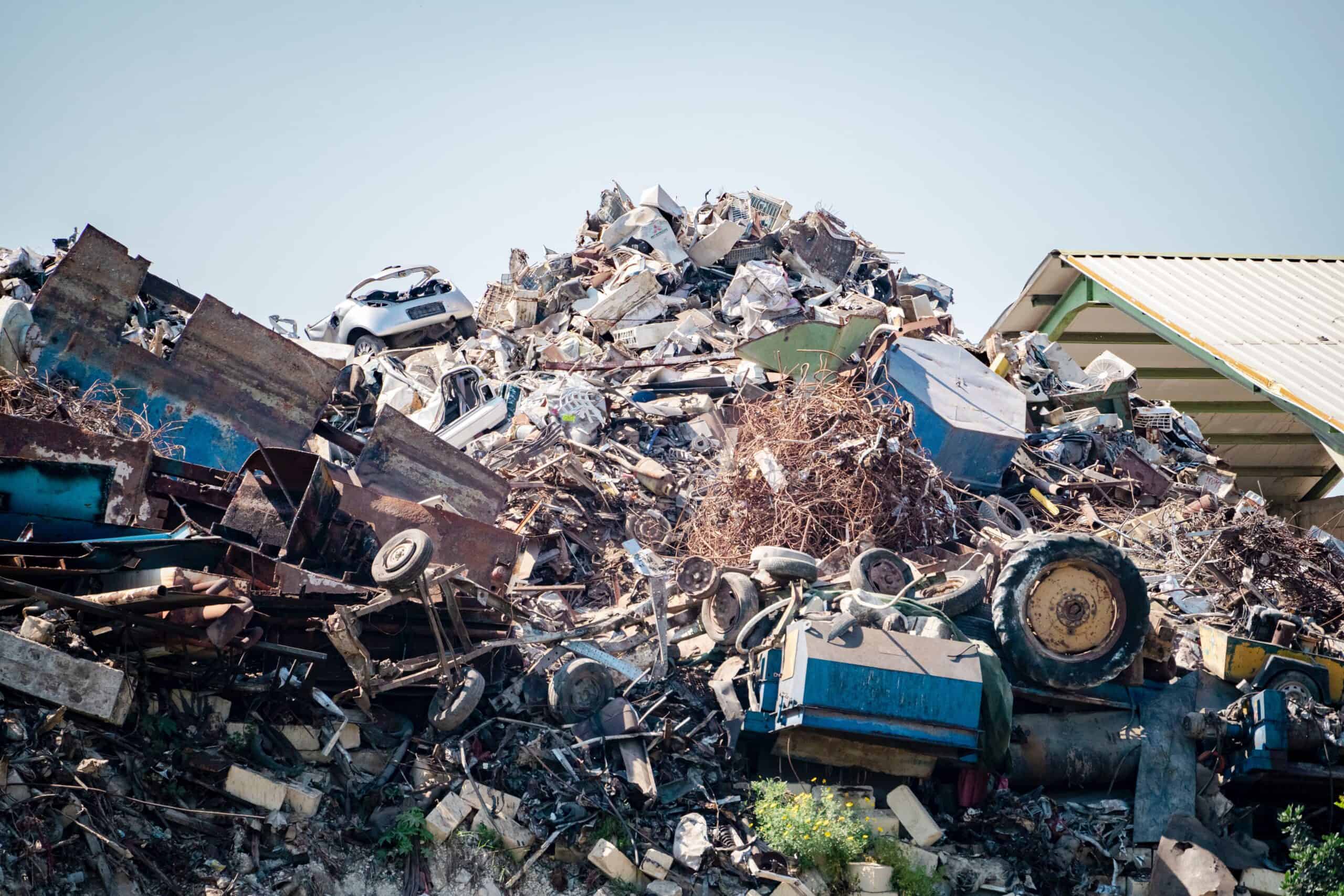
Remove this sort of garbage and clean this area to avoid mold growth.
6. Store the enclosure in a cool place.
Temperature control is key to an ant colony’s survival.
Remember how chilling them down hindered their movement in the last tip?
Constant cold temperatures decrease your ant farm’s metabolism and shorten its life span.
Finding a location in your home between 70 and 75 degrees Fahrenheit will be ideal for the ant nest to develop as a community.
Do your research; some ants will range slightly higher, and some will run marginally lower.
Keep your ant farm out of bright sunlight and freezing temperatures or the ants will hibernate.
7. Do not change the place of the formicarium.
While it may not be visible, relocating the ant farm after your ants begin to build tunnels may cause tunnels to collapse.
To avoid additional tension, find a suitable location for the formicarium and leave it entirely motionless.
Ants store different items in these tunnels, and while you may not crush any ants – you may make them lose out on vital resources.
Also, remember that brood is always grown undergrown, as the Queen prefers it this way.
8. Do not mix different ant species in one ant farm.
Most ants do not adapt well to new colonies.
If you mix two or more species of ants, they will fight each other (relentlessly).
So, please, do not do that!
9. Try to look for those ant species that are your area’s local so they can adjust accordingly!
There are several reasons why you should stick to colonies found locally in your region.
For starters, it is prohibited to import certain types of ants into the country.
If a particular ant species become invasive and escape, it might cause significant environmental harm, leading other insects to become extinct and ecosystem imbalances.
Another reason to choose local ants is that they will be much easier to care for because they are already used to environmental components such as temperature and resources.
Have you ever had water in one state and then had water in another?
I can always taste the difference (and your ants can too).
10. Cover the ant farm when you are not observing the ant farm.
This is an additional tip for people attempting to create a sandwich-style formicarium.
Ants prefer to be in the dark.
They feel protected and flourish when they have a cozy nest to run home to.

Cover them with a black sheet, blanket, or box when not examining the ants.
This will result in a more active and established colony.
What Are Some Foods for Ants?
You have put your Queen Ant in a test tube, and she has started to create a colony.
During this stage, some Ant Keepers will add some sugar to the water to give an extra boost to the ants.
To learn more about giving food and water to your ants during ant keeping, you should read the articles:
Depending on the type of queen ant captured you will need to do different things.
Fully Claustral Queens
The easiest ant species to keep are those with a fully-claustral queen ant.
This ant is entirely self-sufficient during the first stages of the ant colony.
The new queen ants require no resources in the test tubes besides water trapped behind a cotton ball and are a beginner ant keepers’ dream!
Only certain species are fully claustral, but the ones that are will live entirely off of the energy stored in her wings until the first workers arrive.
Many fully claustral colonies will get through the whole test tube period without any additional liquid food or other resources.
Semi Claustral Queens
Semi-claustral queen ants are a good choice for more advanced ant keepers.
Since this ant species still likes to hunt and search for food during the beginning stage of her colony, you may need to add things like sugar water or honey during the test tube setup.
Make sure to add specifically what your ants want.
For example, harvester ants prefer collecting seeds and dead insects, and the Queen will be looking for those.
We suggest these types of ants for more advanced ant keepers because the beginning stages of raising an ant colony are incredibly hard, and the less you have to interact with your colony, the better your chance of success.
This means there is a direct advantage of raising a fully claustral colony compared to a semi-claustral one.
Once you have moved them out of the Test Tube, you will have to feed your ants (if you haven’t started already).
We suggest you feed ants in smaller amounts a couple of times a week.
Ants do very well with fruits, sugar, seeds, carbs, nectar, and dead insects.
Do not forget the protein food sources: mealworms, crickets, and super worms.
The ants won’t need too much food in the early stages, as they will be swamped building their nest.
As the colony grows, so will the amount you feed your ants.

Ant Farm Basics
You’ve found your Queen Ant, put her in a test tube, and now the population looks to be a decent size.
What do we do now?
We’ll learn about one of the essential parts of ant keeping – The Ant farm.
To start, there are a lot of sub-types of ant farms, but every ant farm falls into three categories.
Every farm has its advantages and disadvantages and its unique features. It’s up to the ant keeper which they will choose.
One of the best tips I can give you is not to use gel. Gel creates more problems than it solves – as it eventually will mold and does not have a good nutrient profile.
| Type of Ant Farm | Materials | When to Use |
| Digging Ant Farm | Pre-purchased farm with dirt or other materials | Tunnel viewing, Children accessible, quickest option. |
| Pre Tunnel Ant Farm | Silicon or other hard sturdy materials | Top viewing, pre-made tunnels, and specific sizing requirements |
| Terrariums & Outworlds | It could be anything (custom-designed mostly) | Viewing pleasure, these look incredible and are used in living rooms. |
More information can be found on mold and building your own ant farm in these articles
- How to handle mold in the ant farm
- How to start an ant farm as a beginner
- How to make an ant farm at home
- How long do ant farms last?
Can you start an Ant Farm without a queen ant?
Before setting up your ant farm, ensure you understand how long you want it to stay and your end goal.
If you are in this for the long run – you should make the correct choices.
For example – ant farms without Queen ants.
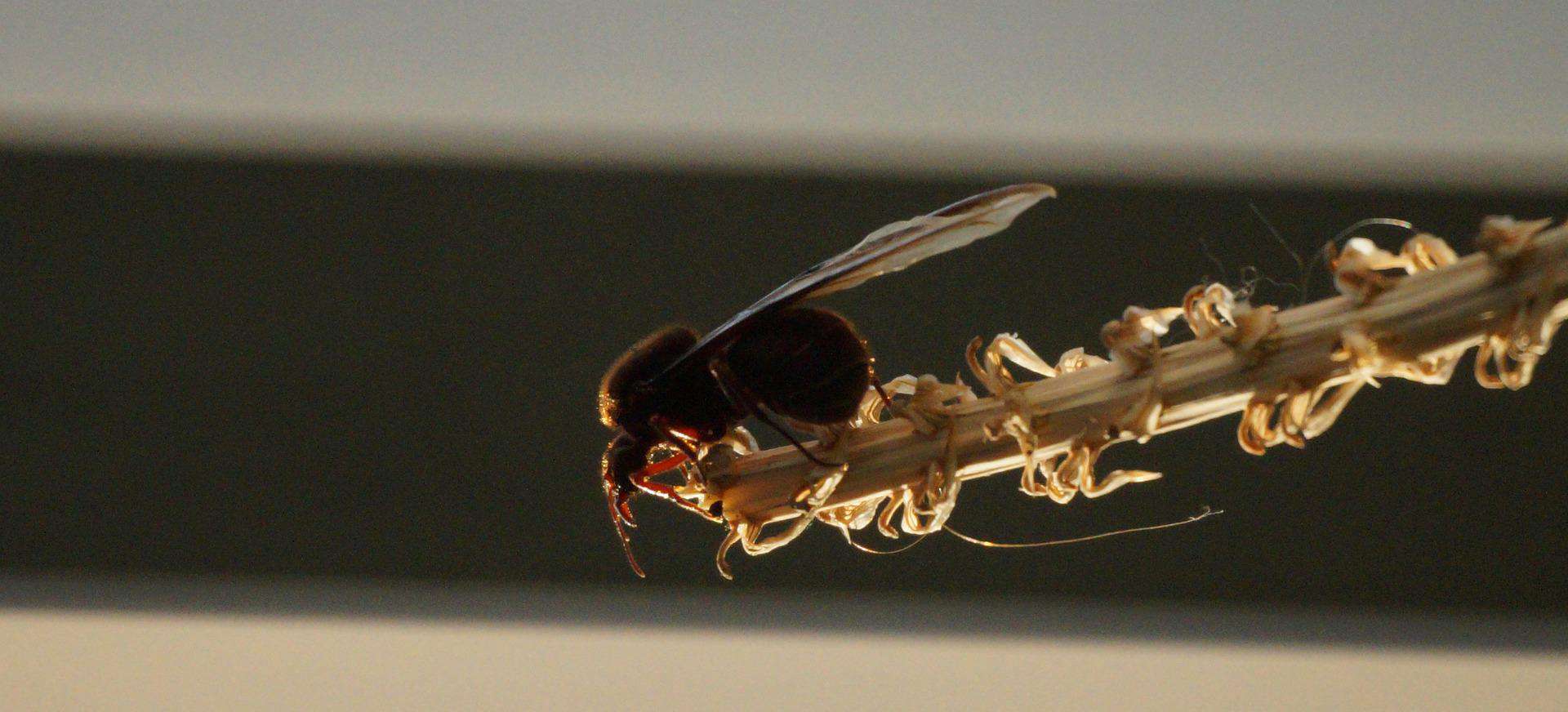
If you would like to establish an ant colony quickly and just want it to survive a few days or weeks, At most, what you need are a few worker ants but no queen.
The problem is that worker ants are left with nothing to do without a queen since they cannot produce eggs.
Yet, there are situations when this is the most straightforward and most practical alternative.
This process will not work long-term.
If you are ready to start the journey the correct way – we can help.
The are some things you will need.
Further down in this article, we will break down everything you need as a quick ant-keeping start kit.
Basic Ant Keeping Supplies
- One big glass container with a cover (pole holes in it)
- One small glass container with a cover
- Ants from your backyard
- An ant-collecting container
- Sand. You will need that to place a big jar.
- A tiny amount of honey, sweetener, or breadcrumbs (we like honey)
- A small amount of sponge
Advantages of Keeping Ants in Ant Farms
Most of the action in ant colonies takes place beneath the earth, which is difficult for anyone to observe because you can’t see through the planet.
This is why we build ant farms!

They give a thin coating of ground and make the ants believe they are underground while allowing you to see what’s happening (we call this an ant world, or outworld)
The tunneling of ants is one of the most extraordinary things possible.
Then, of course, you can make your unique ants nest too!
Starter Ant Farm Kit
To let the ants breathe, poke several air pockets in the cap of the enormous container.
The holes must be tiny for the ants not to be able to break free!
Put the small jar in the giant jar upside down.
That is the ant farm’s inside wall.
This confines the ants towards the boundary of the giant jar, where you can see them.
Fill up any gaps in the containers with sand. At the upper edge, leave the fitting room; we do not want spills!
It is time to track down your ants! Search for ant nests behind pebbles and decaying tree limbs in the yard.
A nest will not be far off if you notice one to two ants.
Ants like to stick together!

Gather several ants! You will want to start this journey off right.
Put little candy or breadcrumbs in the jar, set it near the nest, and watch as the ants gather.
A hundred is an excellent starting point, and we like to go for 150!
We know you will want to integrate them with the other colony, which sometimes works – though sometimes the ants need a little persuasion.
Your ants need water and food to survive.
Cover the lid of the container with honey, sugar, or breadcrumbs.
Wash the sponge & place it inside as well, then tighten the cap.
The more food and water your ants have – the stronger they will become.
At Home Ant Starter Kit
After bringing enough ants to the ant colony, they are easy to maintain. All they need is a supply of food, little water, and a pleasant temperature for them and you.
What you feed your ants will be determined by the ant species you have gathered.
Investigate your ants!
You will give seed-harvester insects certain seeds to collect, like grass and bird seeds.
But not all ants want seeds!
This is where the fun is—learning about your new friends.
Furthermore, ensuring that the ant colony has the proper moisture levels is critical.
The ants may die if it is too moist, but they will be thirsty if it’s too dry.
Dehydration can be a dangerous thing for our ants! Getting the moisture right in the tank is crucial.
It will take a little time to determine how much water your ant colony will require, and getting the timing down also takes a bit.
Add some extra water with an eyedropper until the soil seems wet. Also, watch how your ants react.
Watch and see if your ants seem more active with more water.
More activity is a good indicator that they are happy.
How to keep your ants from escaping
Your ants running off and escaping is dangerous for you and your loved ones in your home.
For basic escape prevention, we know many suggest a mixture of baby powder and rubbing alcohol.
While this can work, we suggest applying olive oil around the rim of your ant farm with a cotton ball every couple of weeks.
Keep the layer thin and none of your ants will escape.
Beginning Stages of Your New Ant Farm
The beginning stages of a Queen ant are some of our favorites.
The queens will begin their first walkabout for a while before deciding whether or not to start digging a nest.
Please give her a couple of days to settle in.
Once she finds a spot for herself – she will settle down and start producing.
Make sure you do not disturb her!
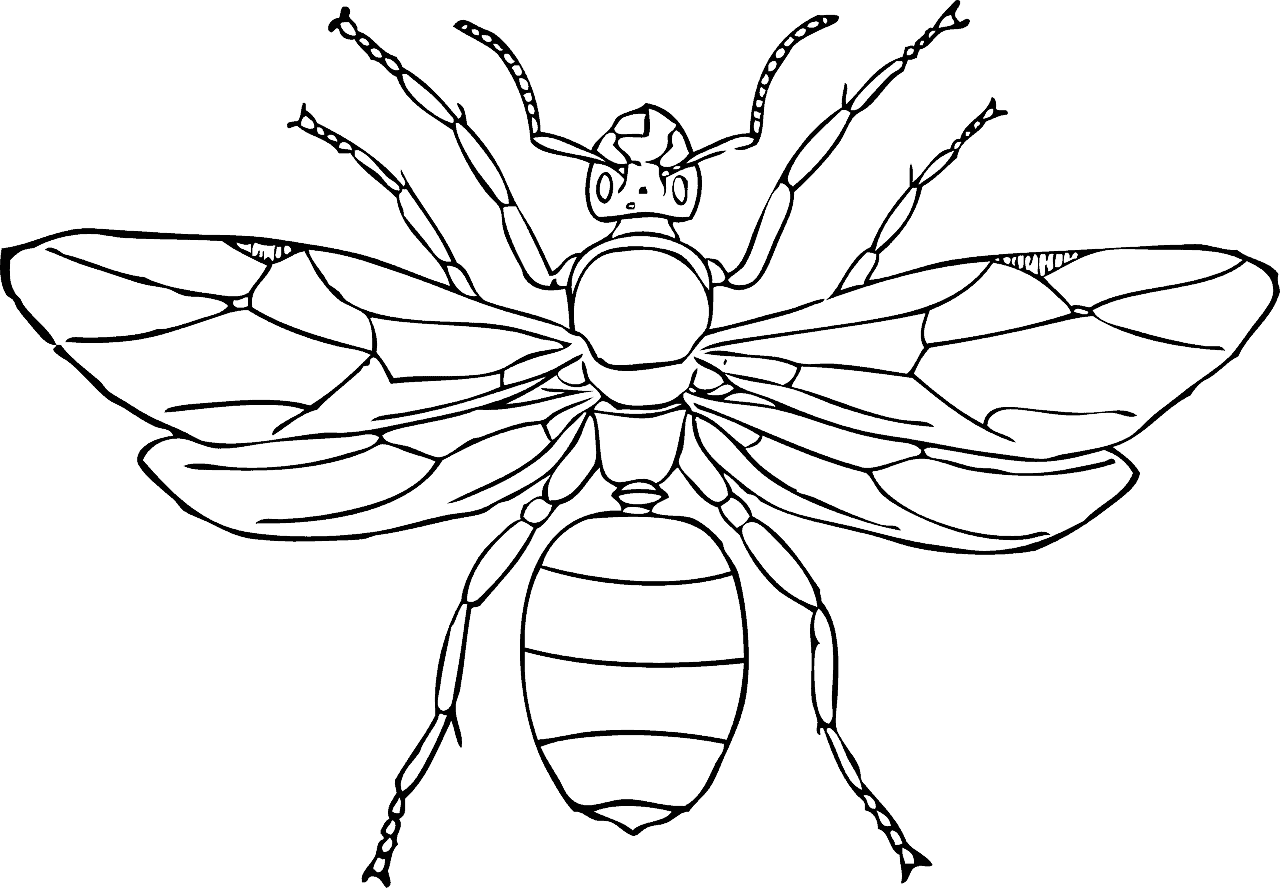
Upset Queen ants will eat their young if they are bitter.
Eggs are often tiny.
Do not worry too much about egg health.
Continue to provide your food and resources; she will continue the egg-laying, and the eggs will eventually hatch.
New Ant Keepers will sometimes get a little too involved in this stage, which hurts the nest.
More details regarding the life-cycle of ants can be found in the following:
Keep up the food and water, and allow your colony to grow.
The number of ants in the colony will grow over time, indicating that the ant farm has started and is healthy.
At this stage, you can conduct various tests with the ant farms!
Please keep track of how the ants organize their tunnels and watch as their systems evolve as the population expands.
This is one of the best parts.
All About the Queen Ant
You can build a nest with only worker ants.
But, they will be more sociable, and your ant farming will live longer when they have a Queen Ant.
The Queen is around three times the size of the worker ants, even if the worker ants are the larger ants in general.
Locate her & put it in your ant colony when you can.
She could lay eggs and run your colony for you!
Queen size varies by species. There are some trends.
Size of a Queen Ant
The Queen of the ant species is much bigger than the worker ants, and the only exception is the troop ant species, which has a queen that is not too much bigger than the rest of the ants.
Wings of a Queen Ant
Although some male ants have wings, it is a good sign that it’s a Queen ant if you see wings.
The ants will lose their wings after finding a suitable location for a nest.
Once you’ve seen and been around ants for a while – pay attention to those wings.
If the ant’s wings seem more significant, that is a Queen ant.
Focus and try to capture her!
Size of the thorax on the Queen
The thoraxes of queen ants are thicker and more prominent.
The thorax is the body section directly below the skull that links the base to the waistline. From there, it connects to the tail end of the creature.
Location of the Queen
The Queen ant is usually found at the nest’s center.
But, of course, you would have to dig through an ant’s nest to discover this.
Because particular ant species sting and are poisonous, it is not suggested for all kinds of ants.
Please don’t go diving into the bottom of ant hills!
Find a guide with nuptial flight charts for an ant species you’re interested in (for example, some take flight in the summer), and plan your queen hunting around these flights!
Monogyne Ant Colonies
When an ant species only have a single queen ant in the colony, this species is referred to as monogyne.
These colonies follow strict hierarchies and are smaller than polygyne ant colonies.
If a colony is monogyne, and another queen tries to make her presence in the ant farm, she will quickly be eliminated.
If you’re trying to introduce another queen into a monogyne farm, we highly recommend that you do not do this, as this ant will quickly be disposed of.
Polygyne Ant Colonies
When an ant species has multiple queens, this species is referred to as polygyne.
These queens can be founding queens or queens that come along later in the process.
With more than one Queen, do not be shocked when these farms turn into a large colony.
Just because a colony is polygyne does not mean that all queens will be accepted into the colony.
Ants are scent driven, and if this scent does not blend or alarms the workers for any reason, this Queen will be dealt with swiftly.
What role do ants play in the environment?
Ants are crucial for the ecosystem.
Most people do not like to see Ants around, which is sad because Ants are actually helping them most of the time and are an incredible species.
Ants improve soil quality by building their nests below, making it more nutrient-rich for a plant to thrive.
Ants will eat anything that will fit between their mandibles.
Flowers are an example of this.
Ants will eat portions of seeds, leaving the remainder to develop and grow.
This works well for spreading flowers, as the Ants will walk around and spread the seeds everywhere!
Ants will tidy up animal carcasses, vegetation, and other debris that may have been left on roads and sidewalks.
They contribute to environmental cleanup, somebody has to clean this stuff up, and ants do it gladly!
Ants also consume decaying plant materials, which helps keep the environment free of rotting plants and vegetable waste.
Ants hunt nuisance insects that are more dangerous to animals and humans. Some examples are termites or aphids.
Ants are vital to the food web and local ecosystems.
Ants are eaten by birds or other bugs, making them a natural ecosystem component.
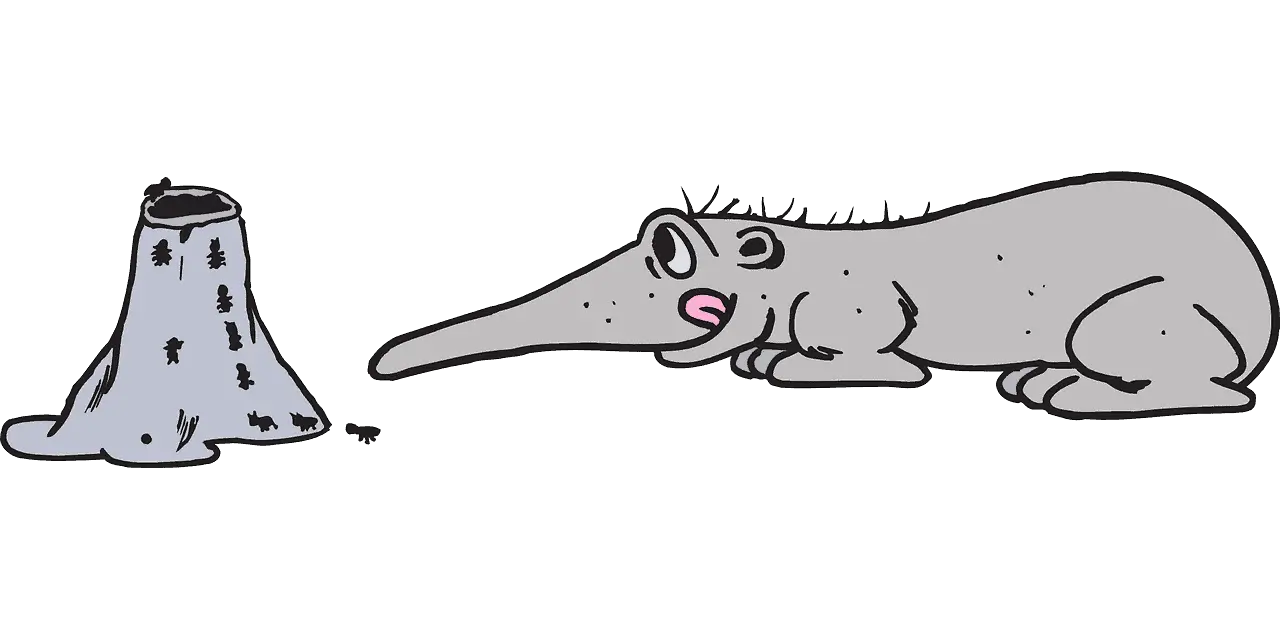
When Do Ants Hibernate?
When the temperature cools, ants will enter a stage of hibernation.
During this stage, the ants will restore energy.
If you’re entering the early stages of winter, we suggest increasing the food you provide your ants.
Ants need more food leading up to hibernation – as they store for winter.
During hibernation, you won’t have to feed your ants.
Please remember that they need water to last through the dry season.
You still must ensure the continued moistness of the formicarium.
This requires you to check up daily to see whether the ant colony is adequately hydrated or not.
Don’t get caught off guard if your ants are slowing down; there’s a good chance the weather is cooling, and they’re preparing to hibernate.
What are some go-to websites that talk about Ant Keeping?
Besides our great website, the best ant-keeping websites are Ant’s Kingdom, Ant Keepers, Ants Canada, and Ant Keeping Depot. These sites are great for different reasons and will provide you with all the resources to start and fulfill your ant-keeping journey.
| Website | Reason To Visit |
| Ants Kingdom | Making Ants more accessible to everyone |
| Ant Keepers | Insightful posts on Ant Keeping |
| Ant Canada | Ethical Ant Keeping and local community outreach |
| Ant Keeping Depot | Exotic Ants |
Ant Keeping Resources are abundant, but good ant-keeping websites aren’t. It’s easy to get sidetracked with wrong information when you realize how much contradictory information there is on the internet.
What is the best Ant-Keeping Farm for Kids?
We realize that kids need a little help with their first ant farm.
This is going to be the only time we will recommend a gel farm, as a soft intro into the hobby for kids.
After the queen ant has formed her colony and is a size of 50-100 workers, it’s time to take your ants to their new home.
If you are searching for the best ant farm on the internet, you can find more than a hundred of them, but we personally love the Dan & Darci Light-up Ant Farm (Amazon Link).
Here we have a buying guide on the Dan and Darci Ant Farm.
If you just want a short summary:
Some things we love about Dan and Darci Light-up Ant Farm
Dan and Darci light-up Ant Habitat:
- This model is for children or for a beginner who wants an easy intro to ant keeping.
- Gel is easy to get started with quickly.
- No batteries are required for this model because a USB cord powers the lights.
- It is really easy to set up and affordable.
- A beginner can learn a lot from this farm and eventually move into a full-blown ant formicarium.
- The blue color is pretty cool
Some things we do not love about Dan and Darci Light-up Ant Farm
- Gel terrariums are great for kids but are not a long-term solution for ant keepers. As this farm is a gel ant farm, it is a great introduction to the hobby, but will eventually need to be transitioned into a more traditional farm.
[amazon box=”B07W3NLRVG”]
Is Ant Keeping for You?
We’ve discussed the basics of keeping ants that a beginner has to know to go from a wild colony into a mature colony.
It’s not a very hard process!
With proper measures, techniques, tips, and research – anyone can do it.
More tips and info for beginner ant keepers can be found in the following:
You can go on a walk, find a Queen Ant and then put her in a test tube.
You have to take good care of your ants throughout this whole process.
If you think that ants are easy – they are.
If you think that ants are zero work – they aren’t.
Don’t put your ant farm directly into the sunlight because that can kill your ants.
Feeding your ants and consistently replacing the freshwater will make for a healthy colony.
You don’t have to put much effort or your entire day into taking care of your ants, but with some brilliant work, anyone can do it.
Following these measures, you can be a good ant keeper and make money from it.
Remember, nothing is easy, but working smart and having a piece of good knowledge about what you are doing can be a game-changer.

